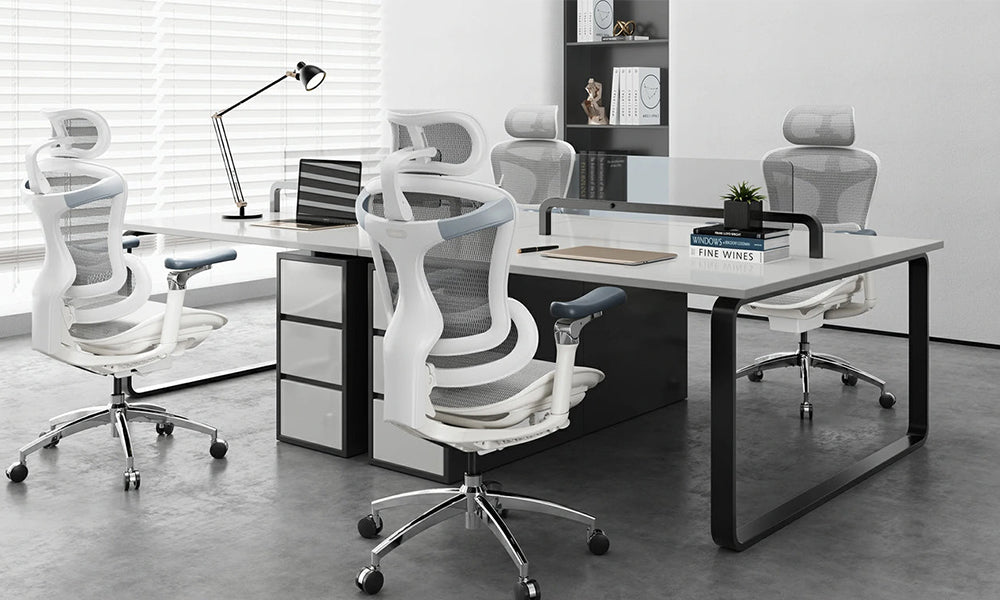Ergonomic chairs have become a staple in modern workplaces and home offices, offering comfort, support, and improved posture for users who spend long hours seated at their desks. However, a common concern among consumers is whether these chairs have weight limits and how those limits might affect their suitability for different individuals. In this article, we delve into the question: Is there a weight limit for ergonomic chairs?
Understanding Ergonomic Chairs
Before addressing weight limits, it's essential to understand what makes a chair ergonomic. Ergonomic chairs are designed with the human body in mind, aiming to provide optimal support and comfort to reduce strain and improve posture during long periods of sitting. These chairs typically feature adjustable components such as seat height, armrests, lumbar support, and recline mechanisms to accommodate a variety of body types and sitting preferences.
Weight Capacity: A Crucial Factor
Weight capacity is indeed a crucial consideration when choosing an ergonomic chair. While ergonomic chairs are engineered to support a range of body types, they do have specified weight limits. Exceeding these limits can compromise the chair's structural integrity and negate its ability to provide adequate support, leading to discomfort and potential safety hazards for the user.
Determining Weight Limits
The weight limits of ergonomic chairs vary depending on factors such as design, materials used, and construction quality. Manufacturers typically test their chairs to determine their weight capacities and provide this information in product specifications. These weight limits are meant to ensure the chair's durability and performance under normal usage conditions.
Common Weight Limits
Ergonomic chairs commonly have weight limits ranging from 250 pounds to 400 pounds or more. However, it's essential to note that these are general guidelines, and weight capacities can differ significantly between chair models and brands. Some chairs may be specifically designed to accommodate heavier individuals and feature higher weight limits accordingly.
Factors Influencing Weight Capacity
Several factors influence the weight capacity of ergonomic chairs:
Frame and Structure: The chair's frame and overall structure play a significant role in determining its weight capacity. Chairs constructed with sturdy materials such as steel or reinforced plastics tend to have higher weight limits compared to those made from lighter materials.
Components and Mechanisms: Adjustable components and mechanisms, such as gas lifts, recline mechanisms, and armrests, must be robust enough to support the weight of the user. Low-quality or poorly designed components may fail prematurely under excessive weight.
Material Quality: The quality of materials used in the chair's construction affects its overall strength and durability. High-quality upholstery fabrics, padding, and cushioning materials contribute to the chair's ability to support heavier individuals without losing shape or comfort.
Testing Standards: Reputable manufacturers subject their chairs to rigorous testing procedures to ensure they meet industry standards for weight capacity and durability. Chairs that undergo thorough testing are more likely to provide reliable support for users within the specified weight limits.
Importance of Adhering to Weight Limits
Adhering to weight limits is crucial for maintaining the performance, safety, and longevity of ergonomic chairs. Exceeding the recommended weight capacity can result in various issues, including:
Structural Damage: Overloading the chair can strain its components and lead to structural damage such as bent frames, broken casters, or cracked bases.
Reduced Comfort: Chairs that are pushed beyond their weight limits may lose their ergonomic features and fail to provide adequate support, leading to discomfort and fatigue for the user.
Safety Risks: A compromised chair poses safety risks, especially for heavier individuals, who may experience sudden collapses or instability while seated.
Voided Warranties: Manufacturers' warranties typically do not cover damage caused by exceeding weight limits. Using the chair beyond its specified capacity may void warranty coverage, leaving the user responsible for any repairs or replacements.
Choosing the Right Chair
When selecting an ergonomic chair, it's essential to consider not only its weight capacity but also other factors that contribute to comfort and support. Here are some tips for choosing the right chair:
Check Weight Capacity: Review the chair's specifications to ensure it can safely support your weight. If you're uncertain, opt for a chair with a higher weight limit to provide an extra margin of safety.
Evaluate Adjustability: Look for chairs with adjustable features such as seat height, lumbar support, and armrests to customize the fit according to your body size and preferences.
Try Before You Buy: Whenever possible, test the chair in person to assess its comfort and ergonomic design. Pay attention to how well it supports your body and whether it feels sturdy and stable.
Consider Durability: Invest in a chair made from high-quality materials and backed by positive reviews and reputable manufacturer warranties. A durable chair is likely to withstand daily use and maintain its performance over time.
Consult Professional Advice: If you have specific ergonomic requirements or health considerations, consider consulting with an ergonomics specialist or healthcare professional for personalized recommendations.
Conclusion
In conclusion, while ergonomic chairs offer numerous benefits for comfort and posture support, they do have weight limits that users must adhere to for safety and performance reasons. By understanding these limits and selecting a chair that suits your body type and needs, you can enjoy the full benefits of ergonomic seating while minimizing the risk of discomfort or injury. Remember to prioritize durability, adjustability, and overall quality when choosing an ergonomic chair to ensure long-term satisfaction and well-being in your workspace.




Hinterlasse einen Kommentar
Diese Website ist durch hCaptcha geschützt und es gelten die allgemeinen Geschäftsbedingungen und Datenschutzbestimmungen von hCaptcha.